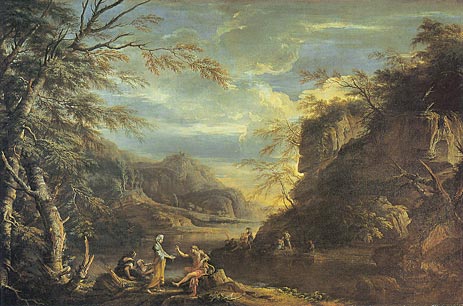The last of this month’s four pictures for summer, and the subject of my penultimate column for this magazine, is a characteristically desolate landscape by the Italian seventeenth-century painter Salvator Rosa. River Landscape with Apollo and the Cumaean Sibyl was definitely created after 1649 and probably, to be more precise, in the mid-1650s. It is owned by the Wallace Collection, in London, and is currently on display there as part of an exhibition devoted to the subject of Rosa’s landscape paintings: “Salvator Rosa: Wild Landscapes”.
Rosa was an ambitious self-made man, famous for being as turbulent as the storm-tossed visions of nature with which he made his name. Born to a builder and his wife in a suburb of Naples in 1615, he studied painting with his brother-in-law Francesco Fracanzano, an artist of distinctly mediocre talents. Rosa left his home town in 1635 and sought to establish himself in Rome, the inevitable destination for any Italian painter seeking to forge a more than merely provincial reputation. A man of considerable literary as well as artistic ambitions, he wrote numerous satirical poems, became the centre of a group of poets and writers and also formed a troupe of actors. His natural bent for satire and his fiery temperament got him into trouble on more than one occasion, and having made an enemy of the most powerful artist in Rome, the sculptor Gianlorenzo Bernini, Rosa moved away and settled in Florence for several years, winning the patronage of Giovanni Carlo de’ Medici. His house became a meeting place for the Florentine learned elite, who went by the name of the Accademia dei Percossi, the “Academy of the Afflicted”. Like his newfound friends, Rosa came to espouse the fashionable doctrine of neo-Stoicism, a revived form of the ancient...


